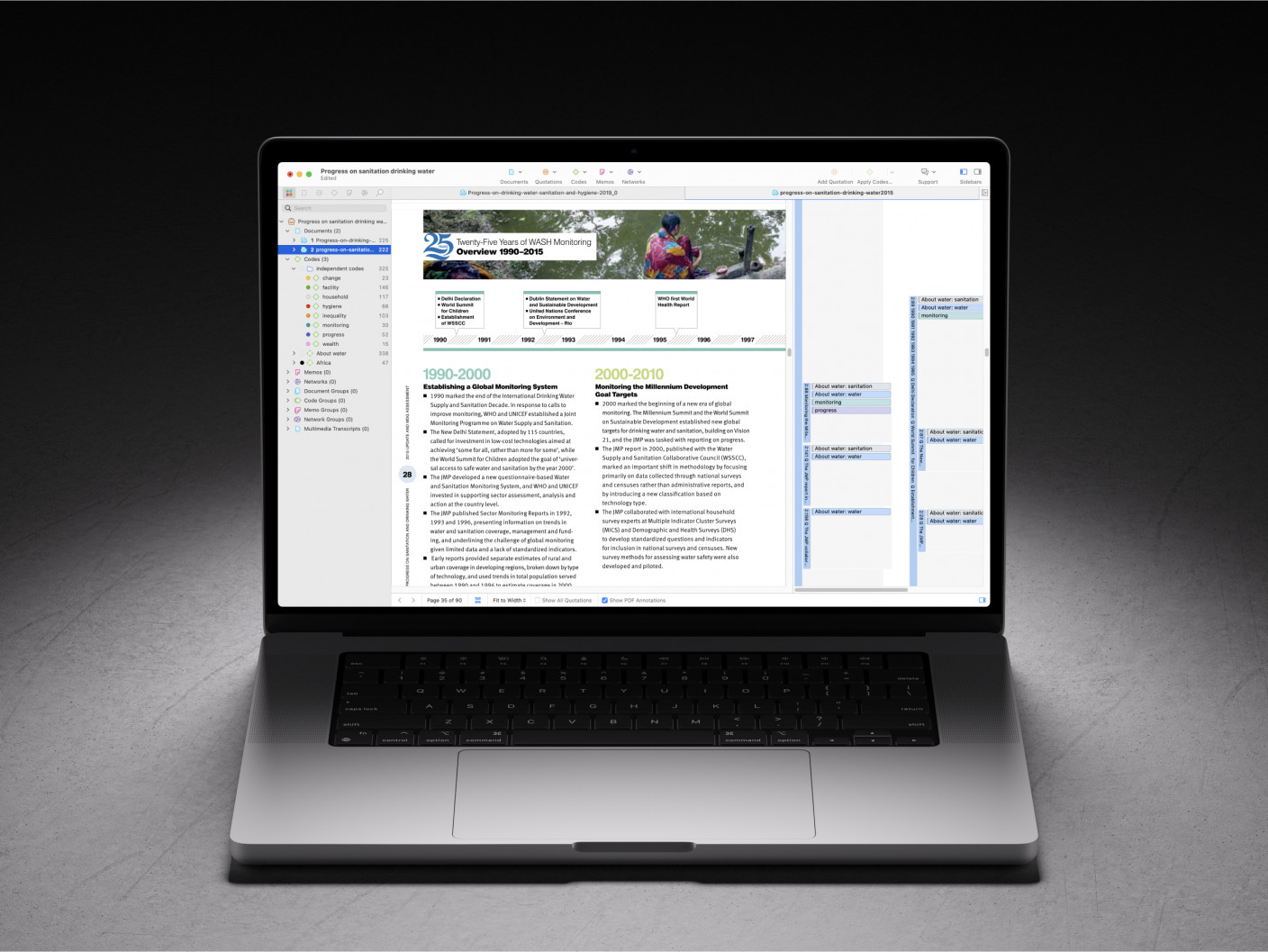- What is Mixed Methods Research?
- Advantages of Mixed Methods Research
- Challenges in Mixed Methods Research
- Common Mistakes in Mixed Methods Research
- Mixed Methods Research Paradigms
- Validity & Reliability in Mixed Methods Research
- Ethical Considerations in Mixed Methods Research
- Mixed Methods vs. Multiple Methods Research
- Mixed Methods Research Designs
- How to Choose the Right Mixed Methods Design
- Convergent Parallel Design
- Explanatory Sequential Design
- Exploratory Sequential Design
- Embedded Mixed Methods Research Design
- Transformative Mixed Methods Design
- Multiphase Mixed Methods Research Design
- How to Conduct Mixed Methods Research
- Sampling Strategies in Mixed Methods Research
- Data Collection in Mixed Methods Research
- Triangulation in Mixed Methods Research
- Data Analysis in Mixed Methods Research
- How to Integrate Quantitative & Qualitative Data?
- How to Interpret Mixed Methods Research Findings?
- Software Tools for Mixed Methods Data Analysis
- How to Write a Mixed Methods Research Proposal
- How to Write a Mixed Methods Research Paper?
- Reporting Results in Mixed Methods Research
- Mixed Methods Research Examples
- How to cite "The Guide to Mixed Methods Research"
Common Mistakes in Mixed Methods Research
Mixed methods research combines qualitative and quantitative evidence to provide a more comprehensive understanding of complex questions. However, effectively integrating quantitative and qualitative components can be challenging. This article explores some pitfalls in mixed methods research and provides practical solutions to help researchers avoid this.

Introduction
Mixed methods researchers investigate complex research questions by combining qualitative and quantitative data and methodologies. When executed correctly, this approach provides a deeper understanding of phenomena than either method could achieve alone. However, integrating two distinct research paradigms presents significant challenges, and there are common mistakes mixed methods research scholars may make that undermine the validity and coherence of their mixed methods research paper. These errors can occur at various stages, from research design and data collection methods to integration and reporting (Creswell & Plano Clark, 2018).
Common pitfalls include failing to effectively merge qualitative and quantitative data, choosing a research design that does not align with the study’s objectives, and neglecting to justify the need for a mixed methods study. Poorly designed sampling strategies, lack of integration during data analysis, and rigid adherence to predefined typologies can also weaken the overall research process. Additionally, many researchers struggle with epistemological inconsistencies, correctly estimating the time and resources required, and presenting their findings in a fragmented manner. In some cases, a lack of technical expertise in either qualitative or quantitative methods further exacerbates these challenges.
Lack of rationale for using mixed methods research
Some researchers adopt a mixed methods approach without clearly explaining why it is necessary. This lack of justification can make the study seem unnecessarily complex or disjointed. To avoid this mistake, researchers must explicitly state why a single-method approach would be insufficient and how combining qualitative and quantitative methods enhances the study’s depth and breadth. A strong justification should include references to existing literature, showing how mixed methods have successfully addressed similar research questions in the past. Additionally, researchers should outline how the integration of quantitative and qualitative evidence will contribute to more meaningful interpretations.
Imagine a study on workplace satisfaction. A researcher might argue that surveys alone can capture general trends, but without interviews, it would be impossible to understand the reasons behind employee dissatisfaction. By demonstrating that mixed methods provide complementary insights—such as surveys identifying trends and interviews explaining them—researchers can strengthen the credibility of their approach.
Lack of integration between qualitative and quantitative data
One of the most critical issues in mixed methods research is failing to combine quantitative and qualitative data effectively. Some studies treat the two components as separate entities, analyzing and reporting them independently rather than synthesizing their findings to create a comprehensive picture.
To avoid this, researchers should plan for integration at the design stage. They should decide whether the integration will occur at the data collection, analysis, or interpretation level. Using established integration techniques, such as merging (directly combining datasets), connecting (using one dataset to inform the other), or embedding (introducing one data type within the framework of another), ensures that qualitative and quantitative components interact meaningfully. Additionally, joint displays—tables that align qualitative themes with quantitative statistics—can be helpful tools for researchers to compare and contrast findings directly. A well-integrated study will allow qualitative research to explain statistical trends or numerical data to support rigorous qualitative insights, creating a richer, more complete understanding of the research problem.
For example, a study on student engagement might collect survey data showing that students who participate in extracurricular activities report higher motivation. If qualitative interviews reveal that students value these activities because they provide a sense of belonging, this explanation strengthens the numerical findings. If integration is not planned correctly, the study might present survey data and interview results separately, missing the opportunity to explain why participation influences motivation.
Choosing the wrong design
A common mistake in mixed methods research is choosing a research design that does not align with the study’s objectives. Each mixed methods design—whether explanatory sequential, exploratory sequential, embedded, or convergent—serves a distinct purpose. When researchers fail to match their methods to their research questions, they risk collecting data that do not fully address their inquiries. To prevent this, researchers must first clearly define their research objectives and assess whether qualitative, quantitative, or mixed methods approaches best answer their questions. They should also determine whether data collection should be sequential or simultaneous. Conducting a pilot study can help identify whether the chosen approach is suitable before fully committing to data collection.
Consider the case of a researcher studying the effects of a new medical intervention. They might start with a survey measuring patient outcomes and then conduct interviews to explore their experiences. If they mistakenly begin with interviews instead of surveys, they might struggle to identify the most relevant factors to explore, leading to a less structured study. Choosing an appropriate mixed methods design ensures that each dataset contributes effectively to answering the research question.
Poor sampling
Sampling strategies in mixed methods research must be carefully planned to ensure that qualitative and quantitative samples align. A major pitfall occurs when sample sizes are disproportionate or when the participants in each phase do not correspond. If a researcher surveys 1,000 people but only conducts interviews with five participants who do not represent the diversity of the sample, integration becomes difficult. To avoid this, researchers should determine how participants will be selected for each phase and whether the same individuals will participate in both. Stratified sampling techniques can be used to ensure that qualitative interviews reflect the characteristics of the quantitative sample.
One example could be a study on consumer purchasing habits that might first conduct a national survey and then interview a subset of respondents with diverse shopping behaviors. If interviews are only conducted with high-income participants, the findings will not represent lower-income consumers, leading to unbalanced insights about consumer and community involvement. Ensuring that qualitative and quantitative samples correspond improves the study’s ability to generate meaningful conclusions.
Over reliance on typologies and standardized methodologies
While standardized mixed methods typologies provide useful frameworks, strict adherence to them without considering the study’s unique context can be limiting. Some researchers attempt to fit their study into a predefined model, even if another approach would be more appropriate. Instead of rigidly following a typology, researchers should assess their specific needs and adapt their methodology accordingly. If a mixed methods design does not fully capture the research problem, a hybrid approach combining elements from different models may be more suitable.
To give an example, a researcher investigating student performance may find that a traditional explanatory sequential design does not work because qualitative insights need to inform the survey design. In this case, modifying the study to allow for an iterative approach—where preliminary qualitative findings shape the quantitative phase that is then further fleshed out with rigorous qualitative data—might be more effective. Flexibility in design ensures that the study remains responsive to research needs.
Time and resource constraints
Mixed methods research is resource-intensive, requiring time for data collection, analysis, and integration. Researchers who underestimate these demands may end up with incomplete or superficial analyses. To avoid this, researchers should carefully assess whether they have the capacity to conduct a mixed methods study. If time or funding is limited, they may need to scale down their study or seek external support. If resources are inadequate, reducing the number of interviews while maintaining diversity may be a better approach than compromising on analysis quality. Alternatively, it may be worth considering a different methodological approach, such as mixed methods systematic reviews that helpfully synthesize primary mixed methods studies.

Ignoring philosophical and epistemological considerations
Mixed methods research blends different paradigms—quantitative (often positivist) and qualitative (often constructivist). If researchers fail to acknowledge and reconcile these differences, their study may lack coherence. To avoid this, they should explicitly state their philosophical stance and explain how the two paradigms will be integrated. Awareness of epistemological differences helps researchers design studies that align with their theoretical framework.
Consider the following example, if a study examines leadership effectiveness, the researcher should clarify whether they are approaching it from a postpositivist perspective (measuring leadership styles with surveys) or a constructivist approach (exploring leadership experiences through interviews). Recognizing and balancing these perspectives enhances methodological consistency.
Challenges in reporting and writing up results
Effectively communicating mixed methods findings requires careful organization. Researchers should structure their reports to integrate qualitative and quantitative results seamlessly. Instead of presenting results in separate sections, they should discuss how one dataset informs the other. Using visual aids like graphs and tables can help make complex relationships clearer.
For example, a study on mental health interventions could present statistical improvements in patient well-being alongside qualitative excerpts explaining patient experiences. A well-structured report ensures that findings are accessible and impactful.
Conclusion
Common pitfalls in mixed methods research can arise from various sources, including poorly integrated qualitative and quantitative components, inconsistent data collection procedures, and inadequate alignment with research questions. These common pitfalls can compromise the validity and reliability of findings, leading to incomplete or misleading interpretations. To minimize such errors, it is essential to maintain methodological rigor, ensure clear integration strategies, and remain attentive to the distinct requirements of both qualitative and quantitative approaches. By fostering a thoughtful, reflective research process, you can enhance the credibility and depth of your mixed methods studies, ultimately producing more comprehensive and meaningful results.
References
Creswell, J. W., & Plano Clark, V. L. (2018). Designing and conducting mixed methods research (3rd ed.). SAGE Publications.


